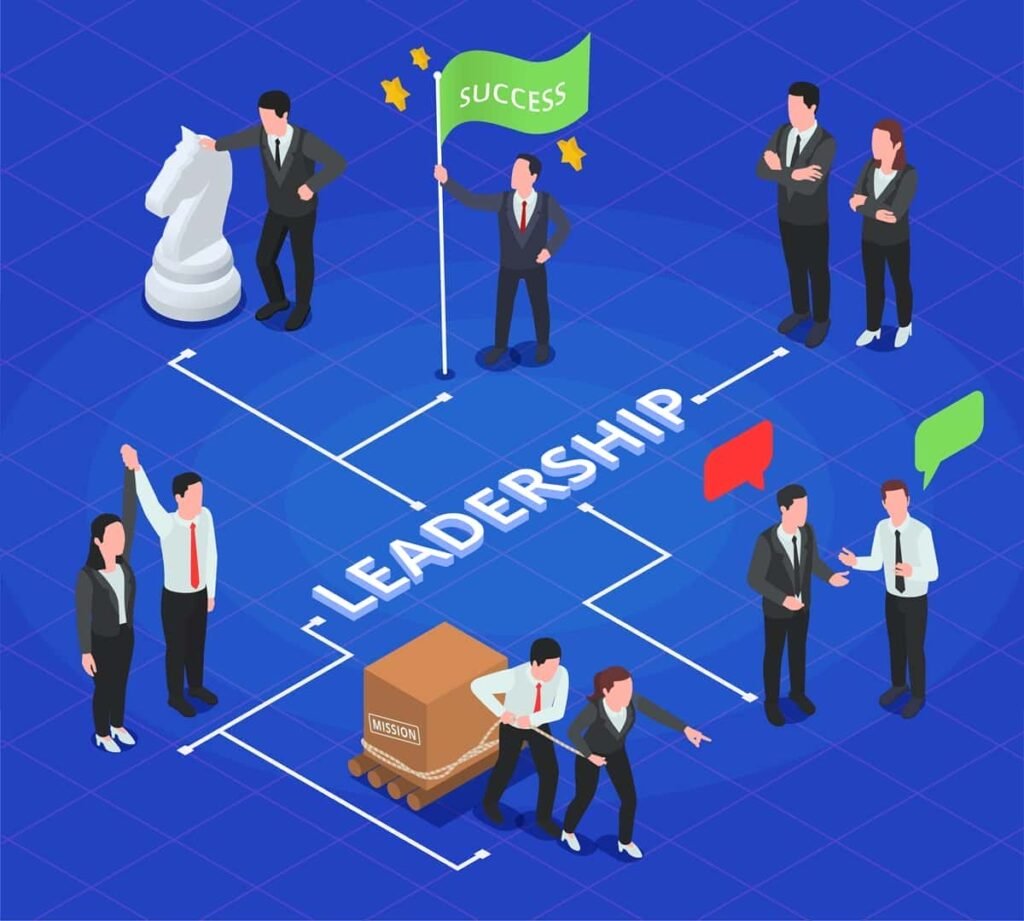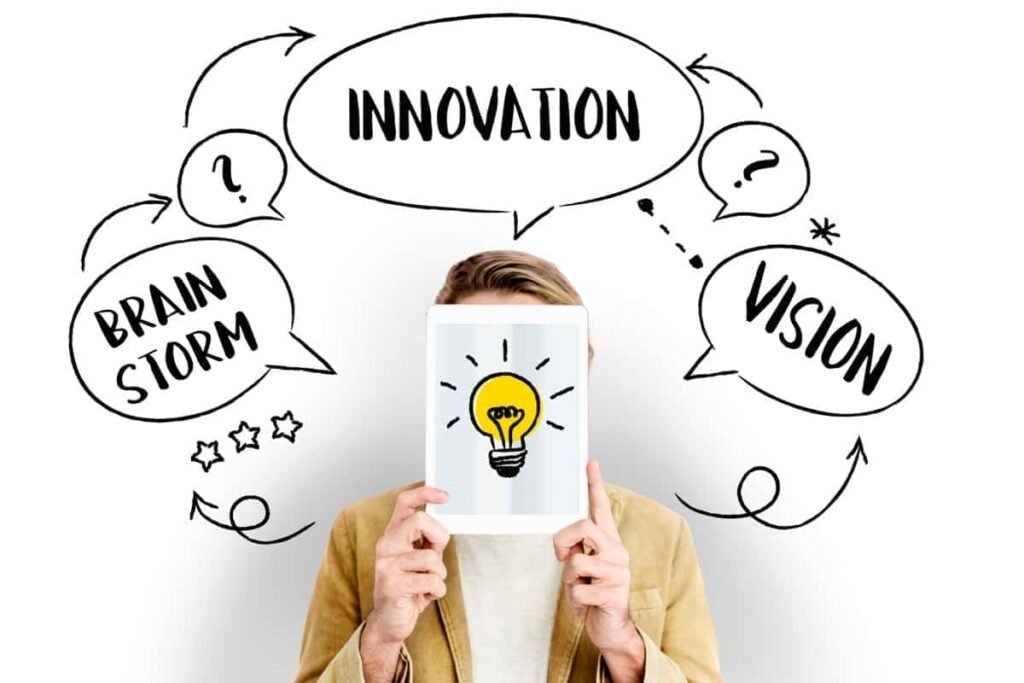TOP 21 Leadership Qualities to Be a Great Leader
Leadership. It’s a word thrown around frequently, often associated with titles and positions of power. But true leadership extends far beyond a fancy office or a corner suite. It’s about influence, impact, and inspiring others to achieve a common goal. Great leaders aren’t born; they are made. They hone their skills, cultivate crucial qualities, and constantly strive for improvement.
Leadership Qualities

If you aspire to be a truly great leader, understanding and developing key leadership qualities is paramount. This isn’t a one-size-fits-all checklist, but a comprehensive guide to help you identify areas for growth and cultivate the traits that will enable you to lead effectively and inspire others. Here are the top 21 leadership qualities that will help you on your journey:
1. Visionary Thinking: The Ability to See the Big Picture
A leader with a strong vision isn’t just managing the present; they are strategically planning for the future. This means being able to anticipate trends, identify opportunities, and articulate a compelling vision that inspires others to believe in the potential of the future.

- What it entails: Seeing beyond the current situation, understanding long-term implications, and articulating a clear and inspiring future.
- How to develop it: Stay informed about industry trends, engage in strategic thinking exercises, and practice compellingly articulating your vision.
- Example: Steve Jobs’ vision for Apple wasn’t just about computers; it was about creating user-friendly technology that empowered individuals.
2. Integrity: The Foundation of Trust
Integrity is the bedrock of effective leadership. It encompasses honesty, ethical conduct, and unwavering adherence to moral principles. Without integrity, trust erodes, and followership diminishes.

- What it entails: Honesty, transparency, ethical decision-making, and consistency between words and actions.
- How to develop it: Practice honesty in all interactions, be transparent about your decisions, and hold yourself accountable to ethical standards.
- Example: Nelson Mandela’s unwavering commitment to justice and equality, even during his long imprisonment, exemplified unwavering integrity.
3. Communication Skills: The Art of Connection
Communication is the lifeblood of any organization, and leaders must be masters of it. This includes active listening, clear and concise articulation, and the ability to adapt communication styles to different audiences.

- What it entails: Active listening, clear and concise articulation, written and verbal communication proficiency, and the ability to adapt communication styles.
- How to develop it: Practice active listening, take public speaking courses, and seek feedback on your communication style.
- Example: Martin Luther King Jr.’s powerful oratory skills were instrumental in mobilizing the Civil Rights Movement.
4. Decisiveness: Making Tough Calls with Confidence
Leaders are constantly faced with making critical decisions, often under pressure and with incomplete information. Decisiveness involves the ability to analyze information, weigh options, and make timely and informed decisions, even when they are difficult.

- What it entails: Analyzing information quickly, evaluating options, and making timely and informed decisions.
- How to develop it: Practice making small decisions quickly, analyze the outcomes of your decisions, and learn from your mistakes.
- Example: During the Cuban Missile Crisis, President Kennedy’s decisive actions prevented a potential nuclear war.
5. Empathy: Understanding and Connecting with Others
Empathy is the ability to understand and share the feelings of others. Empathetic leaders build stronger relationships, foster a more supportive work environment, and are better equipped to motivate and inspire their teams.

- What it entails: Understanding and sharing the feelings of others, putting yourself in their shoes, and showing compassion.
- How to develop it: Practice active listening, seek to understand different perspectives, and show genuine concern for others’ well-being.
- Example: Mother Teresa’s unwavering empathy for the poor and sick inspired millions to dedicate their lives to helping others.
6. Resilience: Bouncing Back from Setbacks
Leadership is not without its challenges and setbacks. Resilient leaders possess the ability to bounce back from adversity, learn from their mistakes, and maintain a positive attitude in the face of difficulty.

- What it entails: Bouncing back from setbacks, learning from mistakes, maintaining a positive attitude, and persevering through challenges.
- How to develop it: Develop a growth mindset, practice self-care, and build a strong support network.
- Example: Abraham Lincoln faced numerous political and personal setbacks throughout his life, but he persevered and ultimately led the United States through the Civil War.
7. Accountability: Taking Ownership of Results
Accountable leaders take ownership of their actions and the results of their teams. They hold themselves and others responsible for meeting goals and addressing shortcomings.

- What it entails: Taking ownership of actions and results, holding yourself and others accountable, and addressing shortcomings.
- How to develop it: Set clear expectations, provide regular feedback, and address performance issues promptly and fairly.
- Example: A CEO who takes responsibility for a company’s financial losses, rather than blaming others, demonstrates strong accountability.
8. Delegation: Empowering Others to Succeed
Effective delegation isn’t just about offloading tasks; it’s about empowering others to grow and develop their skills. Leaders who delegate effectively free up their own time to focus on higher-level tasks while also fostering a sense of ownership and responsibility within their teams.

- What it entails: Identifying the right tasks to delegate, selecting the right people, providing clear instructions, and empowering them to succeed.
- How to develop it: Assess your team’s skills and strengths, provide adequate training and support, and trust your team to deliver.
- Example: A project manager delegates specific tasks to team members based on their expertise, allowing them to take ownership of their contributions.
9. Problem-Solving Skills: Finding Solutions and Overcoming Obstacles
Leaders are often called upon to solve complex problems and navigate challenging situations. Strong problem-solving skills involve the ability to analyze information, identify root causes, and develop creative and effective solutions.

- What it entails: Analyzing information, identifying root causes, developing creative solutions, and implementing those solutions effectively.
- How to develop it: Practice problem-solving exercises, seek out opportunities to tackle challenging problems, and learn from your successes and failures.
- Example: A business owner facing declining sales who analyzes the market, identifies changing consumer preferences, and develops a new marketing strategy.
10. Team Building: Fostering Collaboration and Synergy
A strong team is more than just the sum of its individual parts. Leaders who excel at team building create a cohesive and collaborative environment where individuals can work together effectively towards a common goal.

- What it entails: Fostering collaboration, promoting communication, building trust, and creating a shared sense of purpose.
- How to develop it: Encourage team activities, promote open communication, and recognize and reward team accomplishments.
- Example: A sports coach who fosters a strong team spirit, leading their team to victory despite individual differences.
11. Adaptability: Embracing Change and Uncertainty
In today’s rapidly changing world, adaptability is a crucial leadership quality. Leaders must be able to embrace change, adapt to new situations, and remain flexible in the face of uncertainty.

- What it entails: Embracing change, adapting to new situations, and remaining flexible in the face of uncertainty.
- How to develop it: Be open to new ideas, embrace experimentation, and challenge your own assumptions.
- Example: A company leader who quickly adapts their business strategy in response to a new technological disruption.
12. Innovation: Encouraging Creativity and New Ideas
Innovative leaders foster a culture of creativity and encourage their teams to generate new ideas and explore new approaches.

- What it entails: Encouraging creativity, generating new ideas, and exploring new approaches.
- How to develop it: Create a safe space for experimentation, encourage brainstorming, and reward innovative thinking.
- Example: A research and development director who encourages their team to explore unconventional ideas, leading to breakthrough discoveries.
13. Strategic Thinking: Planning for the Future
Strategic thinking goes hand-in-hand with visionary thinking, but focuses more on the practical steps needed to achieve the vision. Strategic leaders can analyze the competitive landscape, identify opportunities, and develop plans to achieve long-term goals.

- What it entails: Analyzing the competitive landscape, identifying opportunities, and developing plans to achieve long-term goals.
- How to develop it: Study industry trends, conduct market research, and develop strategic plans with clear goals and objectives.
- Example: A CEO who analyzes market trends and develops a strategic plan to expand the company’s market share.
14. Mentoring: Developing the Next Generation of Leaders
Great leaders understand the importance of developing the next generation of leaders. They invest time in mentoring and coaching their team members, helping them to develop their skills and reach their full potential.

- What it entails: Providing guidance, support, and feedback to help others develop their skills and reach their full potential.
- How to develop it: Identify individuals with potential, offer mentorship opportunities, and provide constructive feedback.
- Example: A senior manager who mentors a junior employee, helping them to develop their leadership skills and advance their career.
15. Self-Awareness: Understanding Your Strengths and Weaknesses

Self-awareness is the foundation of personal growth and effective leadership. Leaders who are self-aware understand their strengths and weaknesses, their values, and their impact on others.
- What it entails: Understanding your strengths and weaknesses, your values, and your impact on others.
- How to develop it: Seek feedback from others, engage in self-reflection, and be open to learning and growth.
- Example: A leader who recognizes their tendency to micromanage and actively works to delegate more effectively.
16. Emotional Intelligence: Managing Emotions and Building Relationships
Emotional intelligence encompasses self-awareness, self-regulation, empathy, and social skills. Leaders with high emotional intelligence are better able to manage their own emotions, understand the emotions of others, and build strong relationships.

- What it entails: Self-awareness, self-regulation, empathy, and social skills.
- How to develop it: Practice self-reflection, develop your empathy skills, and learn to manage your emotions effectively.
- Example: A leader who remains calm and composed under pressure, inspiring their team to do the same.
17. Risk-Taking: Calculated and Courageous
While not reckless, good leaders understand that progress often requires taking calculated risks. They assess the potential rewards and consequences before acting, and are courageous enough to pursue opportunities even when there’s a chance of failure.

- What it entails: Assessing risks, calculating potential rewards and consequences, and having the courage to pursue opportunities.
- How to develop it: Start by taking small, calculated risks, analyzing the outcomes, and gradually increasing your risk tolerance.
- Example: A startup founder who takes the risk of launching a new product despite market uncertainty.
18. Perseverance: Staying the Course
Even with the best plans, obstacles and setbacks are inevitable. Perseverance is the ability to stay committed to your goals and continue working towards them despite challenges.

- What it entails: Staying committed to your goals, working through challenges, and never giving up.
- How to develop it: Set realistic goals, break them down into smaller steps, and celebrate your progress along the way.
- Example: An entrepreneur who faces numerous rejections but continues to refine their product and ultimately achieves success.
19. Humility: Acknowledging Limitations and Learning from Others
Humility is the ability to acknowledge your limitations, recognize the value of others’ contributions, and be open to learning from others.

- What it entails: Acknowledging limitations, recognizing the value of others’ contributions, and being open to learning from others.
- How to develop it: Seek feedback from others, acknowledge your mistakes, and be willing to learn from those around you.
- Example: A CEO who openly admits when they are wrong and solicits input from their employees.
20. Integrity: Adhering to Strong Moral Principles
We touched on integrity before, but its importance warrants emphasizing it again. It’s the cornerstone of trust and respect. Leaders with strong moral principles are seen as reliable, trustworthy, and ethical.

- What it entails: Adhering to strong moral principles, acting with honesty and integrity, and doing the right thing even when it’s difficult.
- How to develop it: Define your own moral principles, make ethical decisions, and hold yourself accountable to high standards.
- Example: A politician who refuses to compromise their values for political gain.
21. Visionary Communication: Painting a Compelling Future
It’s not enough to have a vision; you must be able to effectively communicate it. Visionary communication inspires others to believe in the vision and motivates them to work towards achieving it.

- What it entails: Articulating a compelling vision, inspiring others to believe in the vision, and motivating them to work towards achieving it.
- How to develop it: Practice public speaking, develop your storytelling skills, and learn to connect with your audience on an emotional level.
- Example: A non-profit leader who inspires donors and volunteers to support their cause by painting a compelling picture of the impact they are making.
Becoming a Great Leader: A Journey, Not a Destination
Developing these 21 leadership qualities is an ongoing process. It requires dedication, self-reflection, and a willingness to learn and grow. By focusing on these key traits, you can cultivate your leadership potential and become a more effective, inspiring, and impactful leader. Remember, leadership isn’t about a title; it’s about influencing others to achieve a common goal and making a positive difference in the world. Embrace the journey, and you’ll be well on your way to becoming the great leader you aspire to be.
Also Read,


